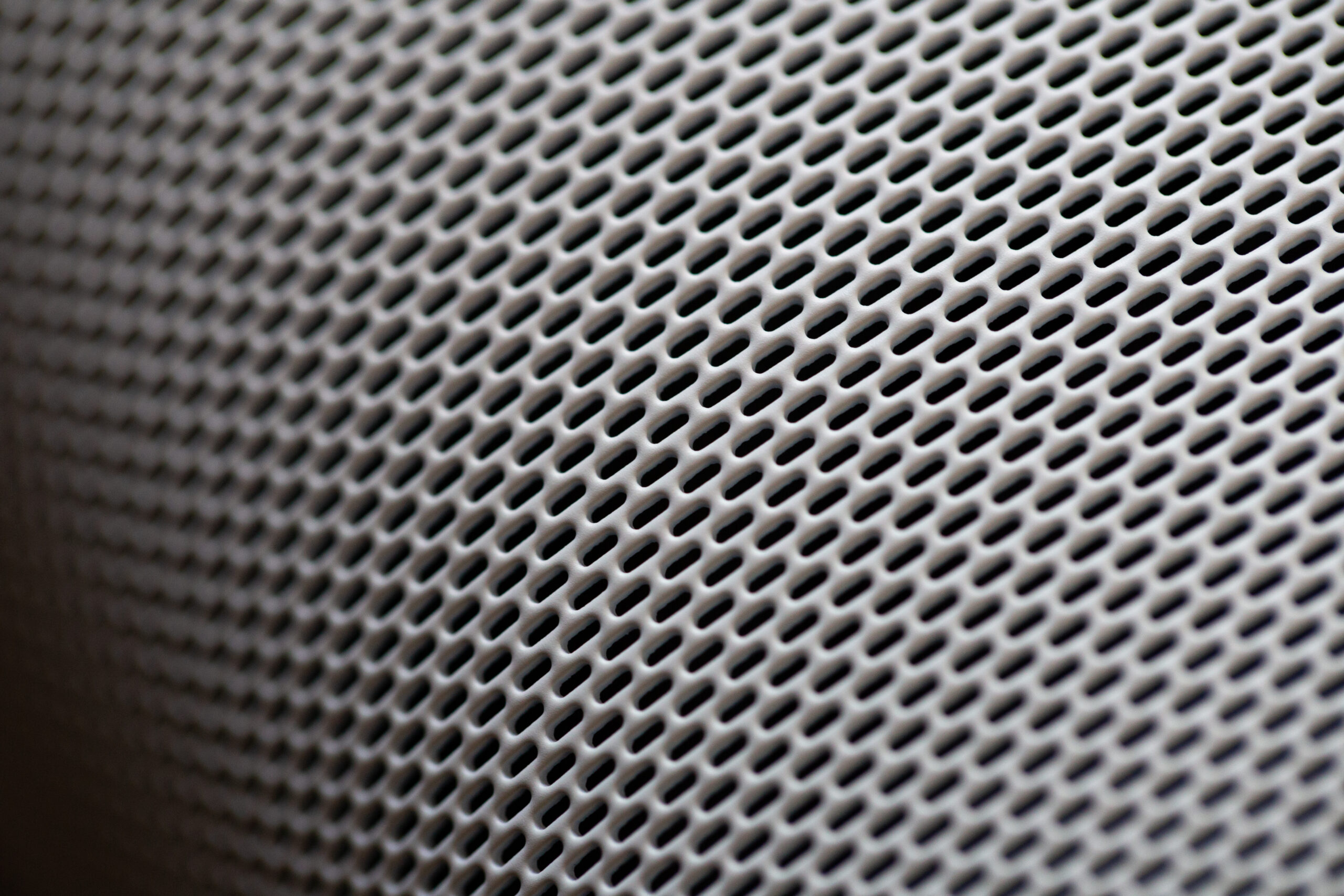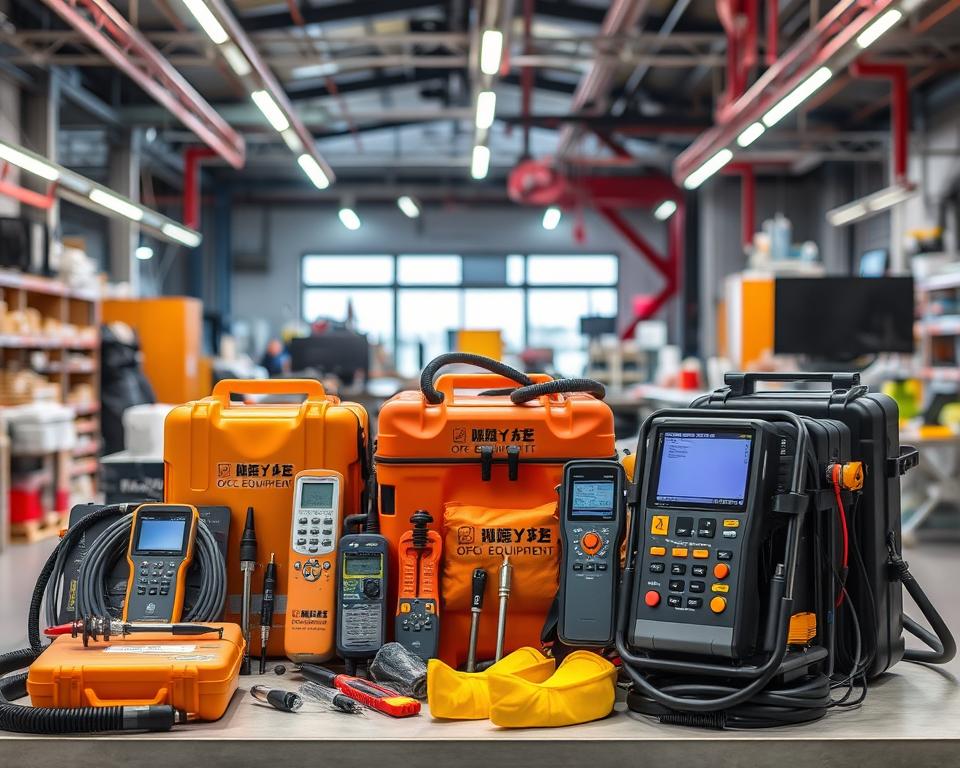FTTH Cable Manufacturing Insights and Trends
The global market for FTTH Fiber Cable is poised to reach an impressive USD xx.x billion dollars by 2031. This increase is propelled by a steady compound annual growth rate over the years. A rise in high-speed internet requirements, coupled by cutting-edge fiber optic technology, is driving this growth.
It is not just about improved connections. The industry is also concentrated on improving how these wires are manufactured. This includes more efficient manufacturing techniques to meet the growing requirements of users. Such advancements are propelling the Fiber to the Home cable sector forward in a highly competitive market.
We will examine the crucial trends in Fiber to the Home cable production. These trends are vital in influencing the future of this rapidly evolving sector.
Overview of Fiber to the Home Cable Manufacturing
Fiber to the Home cable production has expanded substantially, driven by a global need for high-speed broadband. The telecommunications sector, including SZ stranding line manufacturing, is a key player in meeting this demand. It’s pushed forward by regulatory shifts, tech advancements, and our dependence on the web.
5G systems and smart devices have greatly enhanced the FTTH cable market. New production techniques allow these wires to offer faster, more reliable broadband. Supporting the online realm requires continuous upgrades in telecommunications infrastructures.
Government backing, with programs advocating wide broadband and digital access, is essential. This has resulted to major investments in the Fiber to the Home cable industry. Creativity thrives, rendering the industry nimble in the presence of new technologies.
Key drivers in the industry right now are:
- Requirement for enhanced speed due to 5G rollout
- Increasing user requirement for uninterrupted high-speed internet
- Government policies promoting broadband access
- Technological advancements in cable production
Below is a contrast of the factors influencing Fiber to the Home cable production:
| Factors | Effect on Fiber to the Home Cable Manufacturing | Instances |
|---|---|---|
| Regulatory Policies |
Favorable |
FCC’s Future Fiber Systems |
| Technological Progress |
High |
Advancements in optical fiber coating technology |
| User Requirement |
Increasing |
Growth in online streaming and online gaming |
| Public Programs |
Encouraging |
Internet enhancement initiatives |
Latest Trends in Fiber Optic Cable Manufacturing
The realm of fiber optic cable production is changing fast. This change is brought by new, sophisticated Fiber to the Home cable technology. It’s essential for those in the sector to keep up with these patterns.
Breakthroughs in Optical Fiber Materials
Enhancing the substances used in making fiber optic wires is a key trend. Firms are exploring to find materials that are high-performing, robust, and enduring. These substances help make Fiber to the Home cable technology more dependable and effective for people’s homes.
Technological Advancements in Production Techniques
The manner these cables are made is also experiencing big progress. New techniques in FTTH cable manufacturing are rendering the process more sophisticated and effective. This involves using automated lines, high-precision machines, and better workflow designs.
These transformations are contributing to better, more cost-effective products. They are improving the standard and lowering the price of fiber optic wires.
The next chart highlights key technological progress and their effect on the manufacturing process:
| Advancement | Impact |
|---|---|
| Automated Manufacturing Systems | Enhanced pace and reduced labor costs |
| Precision Machinery | Improved precision and less resource waste |
| Streamlined Processes | Streamlined processes and increased output |
Thanks to these developments, manufacturers can now create better fiber optic cables. They do this at a lower expense, rendering Fiber to the Home technology more available to a broader audience.
Key Benefits of FTTH Cable Deployment
FTTH cable deployment provides vital benefits, establishing it as the top option for modern connectivity options. Renowned for superior functionality, durability, and safety, fiber optics create a strong and reliable network foundation.
Enhanced Security and Reduced Interference
Fiber optics stand out in safety features. They do not release transmissions, lowering the chance of information breaches. Particularly valuable for entities and individuals seeking for highly secure networks, this perk sets FTTH apart. Moreover, fiber optic technology withstand electromagnetic and radio disruptions, enhancing the reliability of data transmission further.
Enhanced Longevity and Extended Lifespan
The long-lasting nature and robustness of high performance compact fiber unit are striking. They can endure beyond 100 years, slashing upkeep costs and avoiding service disruptions. This robustness classifies Fiber to the Home as a wise, durable choice for future-ready connectivity solutions.
Technological Progress: Fiber Draw Tower and Further
The world of Fiber to the Home cable technology has experienced major strides, particularly in the area of *fiber drawing tower advancements*. These developments have lifted both the standard and the volume of fiber optic manufacturing. Thanks to these enhancements, the whole manufacturing process is stronger and yields optical fibers that are both more efficient and dependable.
Role and Advancement in Fiber Drawing Towers
Fiber draw towers are focused on turning precursors into the slender, pliable optical fibers we require. Thanks to recent enhancements, this procedure has advanced further. It now incorporates high tech chilling, laser measurement, and automated tweaking. These changes allow for pinpoint control over fiber size and strength, leading to better Fiber to the Home fiber optic technology.
Effect on Manufacturing Efficiency
The effects on *fiber optic production efficiency* are significant. Adjusting the fiber draw towers has rendered the manufacturing process more streamlined and faster, which lowers mistakes and delays. This increased efficiency indicates producers can maintain a rapid rate without compromising on quality. Such progress is crucial to fulfilling the soaring demand for Fiber to the Home cables in our digital age.
Market Dynamics and Expansion Forecasts
FTTH cable market expansion is propelled by the requirement for high-speed internet. This requirement is from both users and companies. Many elements propel this increase, including initiatives to improve digital inclusion. Industry participants require to understand these dynamics to maneuver the market.
Key Drivers of Industry Growth
Demand for high-speed broadband is a significant factor. The transition towards online services is driving companies and consumers to pursue better, more dependable networks. Government efforts to increase internet access also play a key role. These measures, like financial support and development policies, boost the industry.
Challenges in the Current Market Landscape
Yet, the industry faces obstacles, such as the elevated expense of installing FTTH networks. The difficulty of deploying these networks can also be a challenge for some. Surmounting these barriers requires careful strategy and tech investments. To maintain expansion, a concentration on efficiency and innovation is crucial.
Role of Secondary Coating Line in Fiber to the Home Cable Manufacturing
The fiber secondary coating line serves a key role in producing FTTH cables. It applies a shielding layer around the fiber optics. This coating improves the robustness against external and mechanical challenges.
This process is vital for FTTH cable quality. It lets manufacturers use state-of-the-art technology. This results in wires that are beyond the sector norm.
Regular updates in the secondary coating process are vital. They enhance the wires’ dependability and lifespan. This is essential for applying sophisticated fiber optic technology in different areas.
Examine the difference the secondary coating process makes in FTTH cable production:
| Aspect | Standard Coating Line | Sophisticated Secondary Coating Process |
|---|---|---|
| Longevity | Average | Superior |
| Production Effectiveness | Moderate | Optimized |
| Environmental Resistance | Fundamental | Enhanced |
In summary, integrating innovative ftth cable technology with the secondary coating process is essential. It enables manufacturers meet the ever-changing requirements of the telecom sector.
Emerging Trends in FTTH Cable Infrastructure
The realm of Fiber to the Home framework is rapidly evolving. It concentrates on adopting new technologies to boost velocity, volume, and eco-friendliness. Notably, there are improvements in fiber optic wire, like smooth surface designs. These designs make deployment easier, reduce damage risks, and maintain reliable networks.
Invisible tube cables are also gaining ground in the FTTH world. They seamlessly fit into any setting, from homes to offices, ensuring both aesthetics and function. The desire for these innovations underlines the necessity to merge FTTH trends with aesthetic and functional requirements.
Independent wires are a key development as well. They don’t require additional structures for setup, rendering them quick and cost-efficient to deploy. Their efficiency and the dependability of superior fiber optic technology have made them a top pick for many initiatives.
| Pattern | Main Advantage |
|---|---|
| Low-Friction Cable Designs | Lowers setup danger and enhances performance |
| Transparent Conduits | Seamlessly integrates into environments |
| Self-Supporting Cables | Enables quick, economical setups |
The trends in FTTH infrastructure continue to change, aiming for better Fiber draw tower that are highly efficient and versatile. This progress accommodates different environments, urban or rural, guaranteeing users reliable and efficient internet.
Advancements in Fiber Dyeing Equipment
The path of fiber dyeing equipment progress has had a big effect on making Fiber to the Home cables better. It concentrates on more precise fiber wire production with efficient color coding methods. This important shift is crucial for the fiber optics sector.
Enhancements in Equipment Accuracy
The newest fiber dyeing equipment are shining in the limelight for their accurate functions. They’re crucial for producing fiber cables with precise color applications. This process avoids errors and maintains the production steady.
Advantages for Production and Standard Maintenance
These machines do more than just color fibers. They render the whole wire production smoother, enhancing quality standards. This renders FTTH cables easy to identify and guarantees their quality and dependability through setup.
| Advancements | Advantages |
|---|---|
| Improved Accuracy | Accurate color coding; Fewer mistakes |
| Improved Quality Control | Consistent production quality; Efficient installation processes |
| Streamlined Workflow | Increased manufacturing efficiency; Reduced idle time |
To conclude, the strides in fiber coloring technology are changing how we make and use fiber cables. These innovations ensure the high quality of FTTH cables. They enhance the setup procedure and ensure the wires serve dependably in the long term.
The Importance of SZ Stranding Process in Fiber Optic Production
The SZ stranding line is essential in the intricate realm of fiber optic manufacturing. It is key in making FTTH cables. These wires require accurate alignment and wire stranding. This not only reinforces the wire but also enhances its performance.
A reliable SZ stranding line is essential for the Fiber to the Home wire standard. It guarantees each wire is accurately positioned and stranded. This technique renders the wires long-lasting and dependable under various stressors. Thus, guaranteeing reliable Fiber to the Home system setups.
Below is a comparison table showcasing the benefits of integrating a high-quality SZ stranding line into the FTTH cable production line:
| Element | Without SZ Stranding Line | With SZ Stranding Line |
|---|---|---|
| Structural Integrity | Weak and prone to damage | Enhanced and robust |
| Performance Efficiency | Inconsistent signal transmission | Stable and reliable signals |
| Installation Durability | Elevated chance of wire breakdown | Long-lasting and resilient |
| Upkeep Expenses | Regular fixes needed | Reduced maintenance needs |
In summary, the SZ stranding process is essential for top-quality FTTH cable production. Its role is indispensable, guaranteeing the cables meet the best industry norms. This enhances the efficiency and dependability of fiber optics systems.
Fiber to the Home Cable Manufacturing: Effectiveness and Effectiveness
In the field of fiber optic technology, a smooth Fiber to the Home wire manufacturing procedure is critical. It ensures high-quality and dependable products reach at customers. By making FTTH production lines more effective, we can prevent slowdowns and boost the output. This leads to products of higher quality, consistently.
Streamlining Production Processes
Enhancing the effectiveness of how Fiber to the Home wires are produced involves using intelligent technology and techniques. These reduce excess and boost output. A key method is deploying a small fiber module. It shrinks the space needed in production areas, without sacrificing output. This not only enhances efficiency but also renders the production process more adaptable and expandable.
- Implementation of automated splicing machines.
- Utilization of modern resource management techniques.
- Incorporation of live tracking and analytics.
Case Studies of Successful Implementations
Analyzing effective instances in FTTH cable manufacturing sheds light the perks of streamlined production lines. Effective examples show how deploying tech such as small fiber modules can greatly enhance both velocity and standard.
Consider the following examples:
| Firm | Plan | Result |
|---|---|---|
| Corning Incorporated | Introduced automatic fiber positioning techniques. | Lowered manufacturing duration by 30% and boosted standard management precision. |
| Prysmian Corporation | Embraced small fiber module tech. | Expanded production capacity without needing additional space. |
Geographic Study of FTTH Market Growth
The global FTTH market expands uniquely in each area, providing distinct chances and hurdles. Comprehending these varied dynamics, from North America’s advanced sectors to the Asia Pacific’s emerging sectors, is key. This insight is crucial for industry participants.
North American Market Dynamics
In North America, the fiber optic industry exhibits notable expansion. It’s driven by a increasing desire for broadband and better connectivity. Elements propelling this growth include substantial private and governmental investments. These aim to reduce the online divide between urban and rural areas.
Europe’s Funding and Government Regulations
Europe experiences substantial investments in its Fiber to the Home framework under encouraging policies. These regulations intend to strengthen market rivalry and attract private investments. Such programs encourage the fast expansion of fiber optic systems. The digital agenda of the European Union is crucial in maintaining this expansion.
Asia Pacific’s Dominant Position in FTTH Deployment
The Asia Pacific region leads the worldwide Fiber to the Home progress, supported by its widespread city growth and strong governmental backing. With countries like China and Japan at the forefront, due to their strategic plans and large-scale development. This area expansion indicates its critical role in the global FTTH market’s advancement.
| Region | Key Drivers | Obstacles |
|---|---|---|
| North America |
|
|
| Europe |
|
|
| Asia Pacific |
|
|
Top Companies Dominating in FTTH Cable Production
In the rivalrous realm of FTTH cable production, several major firms lead in innovation and quality. These frontrunners not only produce high-grade fiber optics. They also bring advanced tech in the Fiber to the Home industry. This commitment positions them as leading players in the field.
Profiles of Top Producers
Exploring into the details of industry giants like Prysmian Group, Corning, and Sumitomo is informative. Each is celebrated for their unique impact on the optical fiber industry. Their exceptional work have made an unforgettable impact:
| Firm | Major Advances | Industry Effect |
|---|---|---|
| Prysmian Group | Cutting-edge fiber tech, eco-friendly options | Notable worldwide industry presence |
| Corning | Ultra-low loss optical fibers, innovative production techniques | Leading R&D investments in the fiber optics sector |
| Sumitomo Electric | Top-quality Fiber to the Home wires, creative system options | Expanding influence in the Asian and global markets |
Innovative Approaches by Key Players
Genuine creativity marks a top Fiber to the Home wire producer. These companies invest commitment and resources into research and development. Prysmian Group maintains sustainability as a cornerstone, setting benchmarks. Corning, with its high-efficiency fiber optics, pushes performance bounds. Sumitomo Electric, meanwhile, answers the worldwide demand with top-tier network solutions.
Prospects and Potential Developments in Fiber to the Home Sector
The prospects of the Fiber to the Home sector is bright, marked by creativity and expansion. Many potential advances promise to take fiber optics patterns to new heights.
Enhancing substances for wires is among the eagerly anticipated advancements in Fiber to the Home tech. These improvements will boost the wires’ longevity and performance, resulting in stronger, more reliable networks.
There are thrilling new implementation techniques on the horizon. These methods will ease the procedure of installing FTTH and drive down expenses. As a result, more people will have availability to sophisticated fiber optic technology.
Advancements in technology have a vital role in the future of the Fiber to the Home industry. With faster speeds and more reliable connections, providers can fulfill the growing need for broadband.
Looking ahead to the future, AI and ML will likely turn into standard in network management. These techniques will enhance proactive upkeep and boost network efficiency, demonstrating the essential role of FTTH in a rapidly evolving online realm.
Integrating all these patterns and possible advances provides a optimistic vision for FTTH’s future. We can expect a time of significant growth and creativity in the fiber optics industry.
Top Techniques for Top-Quality Fiber Optic Cable Production
Creating top-notch practices in FTTH production is key for producers who aim to lead the fiber optics industry. They must focus on comprehensive testing. With the newest examination tools, firms can ensure their fiber optics are of high standard. This approach assists in avoiding future problems, keeping customers happy for the long haul. Tackling different examinations like tensile strength, compression, and temperature resistance uncovers the cables’ resilience under diverse scenarios.
The craft of making accurate patterns is also pivotal in FTTH production. This procedure demands careful crafting from the fiber drawing phase to the end wire construction. The employment of advanced machines, automation, and robotic systems is vital. These instruments reduce on mistakes, ramp up accuracy, and increase manufacturing output. Putting resources in high-tech equipment and trained personnel ensures a steady level of superiority in product quality.
Choosing the appropriate substances is important a lot too. Opting for high-quality glass and durable plastic coatings vastly boosts the wires’ effectiveness and life expectancy. It’s about striking a balance between substance expense and performance. The goal is to offer final consumers a product that is both highly effective and cost-effective. Additionally, applying a lean approach to manufacturing can improve productivity and reduce excess. This helps top-tier fiber optic wire providers remain rivals in the industry without compromising item standard.
To excel in the fiber optics industry, it’s essential to adhere to these principles: comprehensive testing, precision crafting, and wise substance selections. This, combined with efficient production methods, sets the stage for industry-leading success. By upholding these rigorous norms, firms can manufacture high-standard FTTH products. This commitment to excellence positions them as standout suppliers of fiber optic cables.



